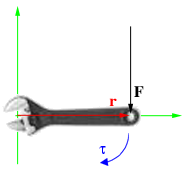The Belle Tout lighthouse (also spelled Belle Toute lighthouse) is a decommissioned lighthouse and famous British landmark located at Beachy Head, East Sussex. It has been called "Britain's most famous inhabited lighthouse" because of its striking location and use in film and television.[1] In 1999, the Grade II listed building was famously moved in one piece to prevent it from succumbing to coastal erosion.
Beachy Head saw numerous shipwrecks in the 17th and early 18th centuries and a petition to erect a lighthouse started around 1691.[2] The calls were ignored for over 100 years until The Thames, an East Indiaman, crashed into the rocks of Beachy Head. The petition gained momentum with the support of a Captain of the Royal Navy and Trinity House, the official lighthouse authority, agreed to attend to the matter.[3] Having witnessed the incident himself, John 'Mad Jack' Fuller, MP for Sussex, used his influence and some of his personal wealth to fund the lighthouse construction.[4]
The first Belle Tout lighthouse was a temporary wooden structure that started service on 1 October 1828. The construction of the permanent granite lighthouse began in 1829 and it became operational on 11 October 1834. Its use of 30 oil lamps meant that the lighthouse would require 2 gallons of oil every hour.[3]
50°44′18″N 0°12′52″E / 50.7382°N 0.2145°E
from en.wikipedia- Circa 1691 petitions for a lighthouse were made due to the number of shipwrecks and sailors losing their lives at the hands of this dangerous stretch of coastline.
- In 1828 as a continuing result of many shipwrecks, a wooden lighthouse was built on the top of the cliffs at Beachy Head. So successful was this that the decision was made to build a permanent lighthouse.
- Belle Toute was built in 1832 and the location of the lighthouse was carefully planned so that the light was visible for 20 miles out to sea and that the light would be obscured by the edge of the cliff if sailors were too close to the shore.
- Over the years erosion of the cliff reduced the effectiveness of the lighthouse and in 1902 Belle Toute was decommissioned when the new lighthouse built at the base of the cliffs came into service.
- In 1903 it was sold by Trinity House and changed hands a number of times.
- In 1923 it was bought by a surgeon, Sir James Purves-Stewart.
- During the second world war with its owners being evacuated, Belle Toute was damaged due to shelling by Canadian Troops using it as target practice.
- In 1948 Sir James offered the building to the council and eventually they took it over due to its historical significance.
- In 1956 Belle Toute was leased out to Dr Edward Revill Cullinan who carried out works on the building and installed modern features such as septic tank, mains electricity and water.
- In 1962 the lease was sold and changed hands a number of times.
- In 1986 it was bought by the BBC who used it in the making of Fay Weldon’s “Life and Loves of a She-Devil”.
- In 1996 it was bought by Mark and Louise Roberts to use as a family home.
- In 1999, due to continuing erosion threatening the future of the building the lighthouse was moved 17 metres (56 feet) back from the edge of the cliff by the impressing engineering work of Abbey Pynford.
- In 2007 the Roberts' have put Belle Toute up for sale with the guide price of £850,000.
- In 2007 the Belle Toute Lighthouse Preservation Trust has been formed to raise enough money to purchase the lighthouse to open it to the public, provide bed and breakfast accommodation and maintain it for future generations of visitors to enjoy.
- In April 2008 Belle Toute was purchased by the Belle Toute Lighthouse Company Limited with the intention of opening it to the public as a bed & breakfast and tourist centre.
- In May 2008 the Belle Toute Lighthouse Preservation Trust wound-up although the Belle Toute Lighthouse Preservation Society has been formed to allow the previous members retain a watchful interest over this magnificent building. The website will be kept updated as an information resource.
It is important to recognise that averages are based on the middle value of a series of figures, although these figures are based on what has happened rather than what yet will happen. For example if within 100 years there was 50m of cliff that disappeared then the average is .5m per year, however, we know that falls can precede the average, i.e. that in 10 years there might be a cliff fall of just 1mm but in the next 10 years there might as much as 9m go, yet over the 20 year period the average might still only be .5m. Therefore it is very difficult to say when the next fall will be although it could be substantially larger than what is expected to be the average.
from www.belletoute.org.uk
Google Map































































































.jpg)


















































































































